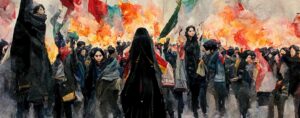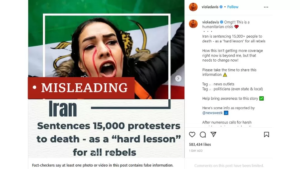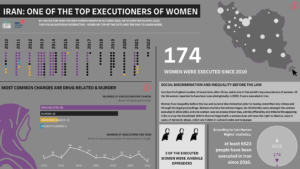
In September, Mahsa “Jina” Amini, 22, died three days after being detained by Iran’s morality police. Since Amini’s death, hundreds have been killed and thousands arrested.
Following months of seemingly endless unrest in Iran, a viral infographic claiming “Iran Sentences 15,000 protesters to death — as a ‘hard lesson’ for all rebels” circulated the internet.

The daunting graphic drew the attention of notable celebrities worldwide, who took to their respective platforms to raise awareness. The widespread falsity raked in over a million views after stars such as Viola Davis shared it on their verified accounts. The posts are now removed.
The misleading 15,000 “death sentences” are based on accurate estimates of how many arrests were made during the Iranian protests. According to state news agencies, there is no evidence that 15,000 protestors have been sentenced to death.
Here are the facts:
According to the Iran Human Rights (IHRNGO), a minimum of 326 protestors, 43 children, and 25 women have been killed.
As of November 18, The Human Rights Activists News Agency (HRANA) reported more than 16,000 protestors detained, placing the death toll at 381, including 57 children.
Judiciary chief, Gholamhossein Mohseni Ejei, addressed that “rioters” could be charged with “efsad fil-arz” (corruption on Earth), “moharebeh” (enmity against God) and “baghy” (armed rebellion). These are death-penalty-warranted offenses in Iran’s Sharia-based legal system.
Iran: Leading Executing State in the World Per Capita
Iran has one of the highest execution rates of any country in the world.
According to the IHRNGO, it has executed 6,894 individuals since 2010, with murder and drug-related offenses cited as the primary convictions. This figure is only increasing and the organization states that these “numbers are an ‘absolute minimum.’”
While in custody, prisoners are subject to threats, abuse and horrifying conditions. A former prisoner reported numerous daily interrogations lasting up to six hours and indefinite solitary confinement as a means of white torture.
Implemented in silence, the Iranian government did not officially announce more than 83% of the country’s executions.
Iran: One of the Top Executioners of Women
Iran is also the top executioner of women, a 2022 United for Iran and Iran Human Rights interactive report shows.

Women, especially, are subject to confronting societal discrimination and inequality at the hands of the law, before committing any crimes and throughout the legal process. Forced marriages are a dominant threat, where women are used as peace treaties between conflicting tribes and denied the right to divorce – even in the event of culturally-coded domestic abuse conditions.
The strength, bravery and “fierce” independence of Iranian women, those in protest especially, has been a longtime inspiration to Iranian Michelle Refani.
“Our hearts are with the brave Iranians who are standing up for our basic human rights,” said Refani. “Praying for your success and peace.”
Despite bloodshed-ridden crackdowns and internet shutdown by the authorities, the nationwide protests persist.
The IHRNGO warns of the escalating disinformation campaign in the days leading up to the UN Human Rights Council Special Session on Iran on Nov. 24. Here, the council plans to address the country’s degenerating human rights conditions and propose an accountability mechanism to prevent the death-dealing outcome for protestors.